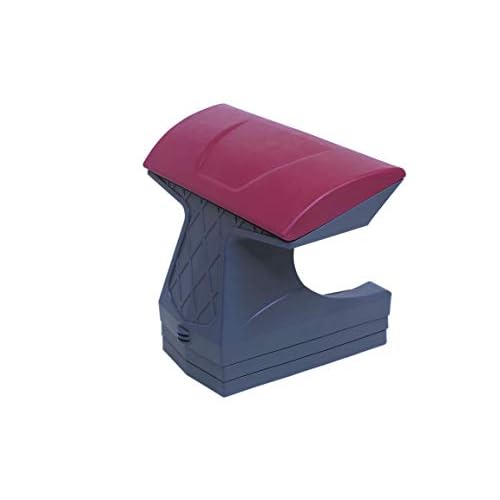
To incorporate meditation into a jam-packed schedule, you must be strategic in carving out moments for mindfulness amidst the chaos. By blending meditation seamlessly into your day, you can cultivate a sense of calm and clarity even when faced with a whirlwind of tasks. So, how exactly can you infuse tranquility into your bustling routine?
Setting Realistic Meditation Goals
When incorporating meditation into a busy schedule, set realistic meditation goals to ensure consistency and progress. Begin by determining how much time you can realistically dedicate to meditation each day. Setting a goal of meditating for just five minutes a day is more achievable and sustainable than aiming for an hour when you’re already pressed for time. Once you’ve established a daily meditation duration that fits your schedule, commit to it. Consistency is key in reaping the benefits of meditation.
Next, consider the type of meditation practice that aligns with your goals and preferences. Whether it’s mindfulness meditation, loving-kindness meditation, or guided visualization, choose a practice that resonates with you. Setting a specific intention for your meditation sessions can also help guide your practice and keep you focused.
As you progress, don’t be too hard on yourself if some days feel more challenging than others. Acknowledge any distractions or difficulties without judgment and gently guide your focus back to your meditation. By setting realistic goals, staying committed, and being kind to yourself, you can successfully incorporate meditation into your busy schedule.
Finding Pockets of Meditation Time
To weave meditation into a hectic day, pinpoint brief moments of calm for your practice. In the morning, consider waking up just a few minutes earlier to sit quietly before the day begins.
Use your commute to work as an opportunity to practice mindfulness, focusing on your breath instead of getting caught up in traffic or public transport chaos.
During short breaks throughout the day, step away from your desk for a few moments of meditation to refresh your mind. Even mundane activities like waiting in line or doing dishes can become opportunities for mindfulness practice.
Before bed, unwind with a short meditation session to relax your body and mind for a restful sleep. By identifying these small pockets of time and incorporating meditation into them, you can make mindfulness a seamless part of your daily routine, even amidst a busy schedule.
Integrating Meditation Into Daily Routines
Consider incorporating meditation into your daily routines to cultivate a sense of calm and mindfulness throughout your day. Start by setting aside a specific time each day for meditation. This could be in the morning before you start your day, during your lunch break, or in the evening before bed. By integrating meditation into your routine, you create a dedicated space for mindfulness that can help you manage stress and improve focus.
One way to seamlessly integrate meditation into your daily activities is to link it with an existing habit. For example, you can meditate for a few minutes after brushing your teeth in the morning or take a mindful breathing break before starting a new task at work. By associating meditation with an already established routine, you’re more likely to stick with it.
Additionally, consider incorporating short meditation sessions throughout your day. This could involve taking a few minutes to focus on your breath or practice gratitude during moments of transition, such as waiting in line or commuting. By making meditation a regular part of your daily routines, you can experience the benefits of mindfulness in a practical and sustainable way.
Utilizing Mindfulness Techniques for Efficiency
Incorporate mindfulness techniques into your daily tasks to enhance efficiency and focus. By practicing mindfulness, you can significantly improve your productivity and overall well-being. Start by focusing on one task at a time, giving it your full attention without distractions. This approach allows you to work more effectively and complete tasks more efficiently.
Another mindfulness technique is to take short breaks throughout the day to reset your mind and prevent burnout. Use these breaks to practice deep breathing or a quick body scan to release tension and refocus your energy. By incorporating these mindfulness practices into your routine, you can maintain a clear mind and approach tasks with a fresh perspective.
Furthermore, practicing gratitude can help you stay positive and motivated, even when faced with challenges. Take a moment each day to reflect on things you’re grateful for, whether big or small. This practice can shift your mindset and improve your overall outlook on life. Remember, mindfulness is a powerful tool that can enhance your efficiency and well-being in various aspects of your life.
Overcoming Common Meditation Obstacles
When faced with common obstacles in your meditation practice, it’s important to develop strategies that can help you overcome these challenges effectively.
One common obstacle is finding time to meditate in your busy schedule. To overcome this, consider waking up a little earlier or incorporating short meditation sessions during your breaks.
Another challenge is a wandering mind that struggles to stay focused. Try using guided meditations or focusing on your breath to anchor your attention.
Physical discomfort, like aches or restlessness, can also hinder your practice. Explore different meditation postures or use cushions for support to alleviate discomfort.
Additionally, distractions from external noises or interruptions can disrupt your meditation. Find a quiet space or use earplugs to minimize external disturbances.
Lastly, feeling impatient or frustrated with your progress is normal but can deter you from continuing. Be patient with yourself, acknowledge your thoughts without judgment, and remember that consistency is key to overcoming these obstacles.
Trending Products














